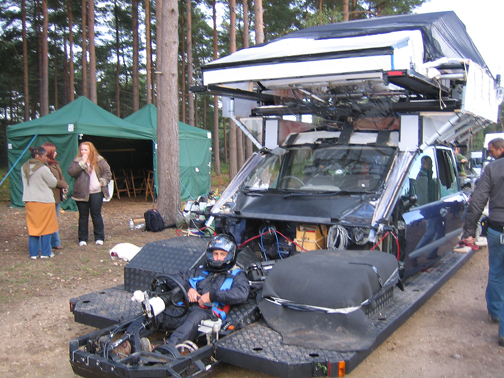While these shots should be praised for their creativity, determination, and, sure, length, I've recently gotten more interested in when it's acceptable to use one, and for what purpose. You might have seen this video about how Spielberg uses long takes in a far more subtle way than most directors; it's part of the really great Youtube channel "Every frame a painting," and it really dissects ways you can use a long shot to your advantage without calling attention to it. In particular, I think it's fascinating how you can essentially take a long shot and break it down into three or four basic shots: the Raiders of the Lost Ark scene stands out to me the most in that regard, with a wide, mid, close, and insert shot all being incorporated into a single take. It moves the scene along, keeps things interesting, and like the guy said, almost definitely saved time on set.
 What's the point of this though? Why not just do a scene four times and cover all your bases? This is just me conjecturing here, but I think every shot should elicit some kind of emotion from your audience. Don't just go about shooting everything willy-nilly: have a purpose. If a character feels isolated and alone, back that camera way up and make her look small. If someone is claustrophobic, slap that macro lens on and get in real tight. Make a powerful character more prominent in a shot than a weaker character, and switch this if their roles are reversed. All of these will, even if only subconsciously, help an audience to better understand whatever emotion you're trying to play up.
What's the point of this though? Why not just do a scene four times and cover all your bases? This is just me conjecturing here, but I think every shot should elicit some kind of emotion from your audience. Don't just go about shooting everything willy-nilly: have a purpose. If a character feels isolated and alone, back that camera way up and make her look small. If someone is claustrophobic, slap that macro lens on and get in real tight. Make a powerful character more prominent in a shot than a weaker character, and switch this if their roles are reversed. All of these will, even if only subconsciously, help an audience to better understand whatever emotion you're trying to play up.  So what emotion does a long take elicit? In short, all of these things, all at once. I know I said I wouldn't bring up Birdman again, but I lied, so deal with it. Birdman is filmed to make it appear as if the entire movie was all done in one take, using really clever transitions to cover up the cuts. It's about theatre and theatre actors, and throughout the film, you can't help but feel like you're watching a stage production instead of movie, mostly due to fluidity and lack of cuts. One of the intentions of this is to (probably) just let the actors take over and control the screen. This works, but only to a certain extent: the lack of cuts can sometimes be distracting, e.g. "oh, did they cut there? I think they cut there. But wait ok maybe not."
So what emotion does a long take elicit? In short, all of these things, all at once. I know I said I wouldn't bring up Birdman again, but I lied, so deal with it. Birdman is filmed to make it appear as if the entire movie was all done in one take, using really clever transitions to cover up the cuts. It's about theatre and theatre actors, and throughout the film, you can't help but feel like you're watching a stage production instead of movie, mostly due to fluidity and lack of cuts. One of the intentions of this is to (probably) just let the actors take over and control the screen. This works, but only to a certain extent: the lack of cuts can sometimes be distracting, e.g. "oh, did they cut there? I think they cut there. But wait ok maybe not."  |
| This guy. |
This brings us back to the subtlety of the Spielberg long take: it's long enough to let the actors act uninhibited from cuts and various camera angles, while still being short enough to not draw attention to itself. The "Every frame a painting" guy calls it "robust," and I think that's the perfect word for it. It's simple, gets a strong point across, and can free up time on set. Ideally, we'll find some way to incorporate it into our film this semester, and if we do it right, you might not even notice it.
Also, here's another great article about the evolution of long takes, both subtle and not-so subtle. Looking at you, Lubezki.



